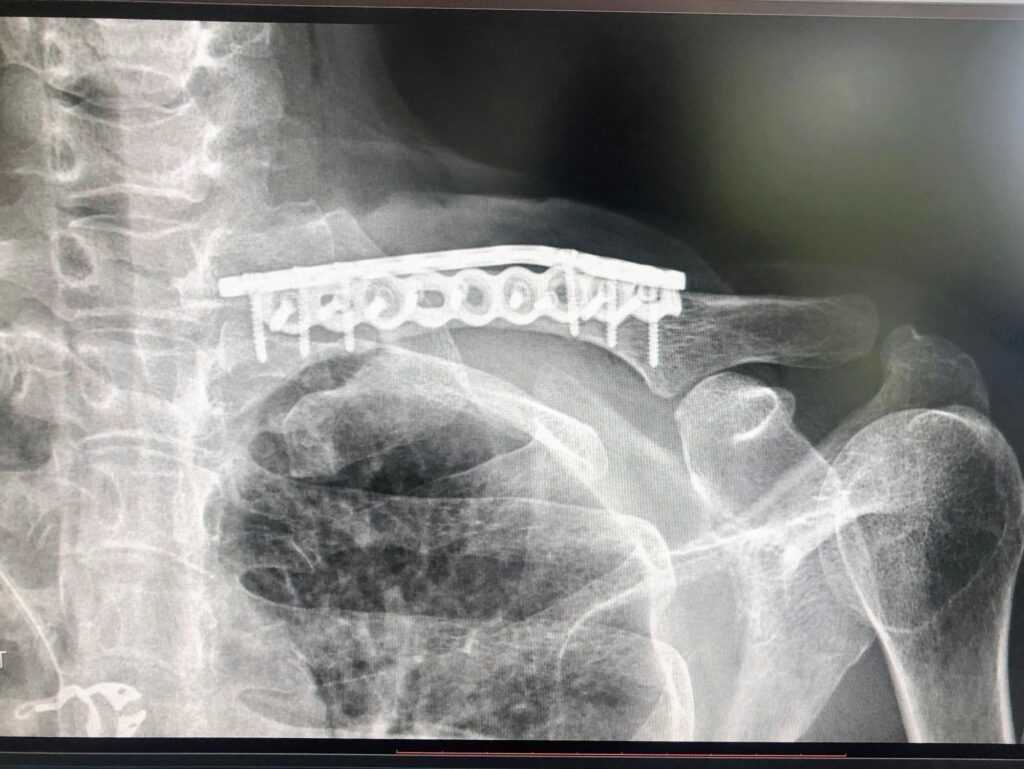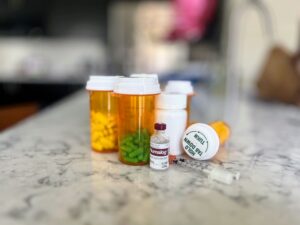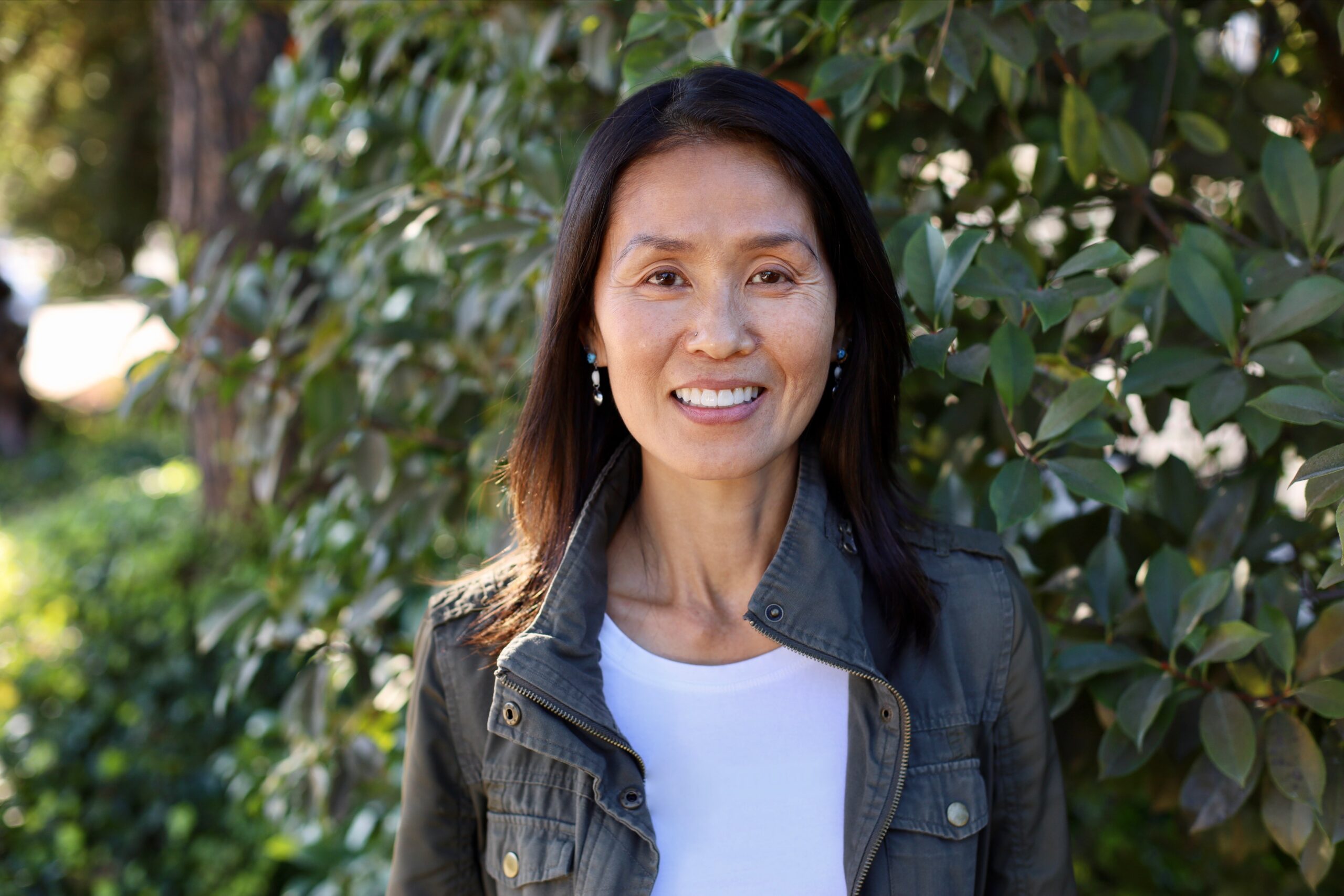When I first found out I needed clavicle surgery, I had so many questions. How painful would it be? What would recovery look like? Would it even be worth it?
Now that I’ve gone through it not once, but twice—including a plate removal surgery—I want to share what I experienced for anyone out there feeling anxious or unsure. This isn’t medical advice. It’s just a real story from someone who’s been there, made it through, and learned what really helps when you’re facing clavicle surgery.
What Led to My Clavicle Surgery
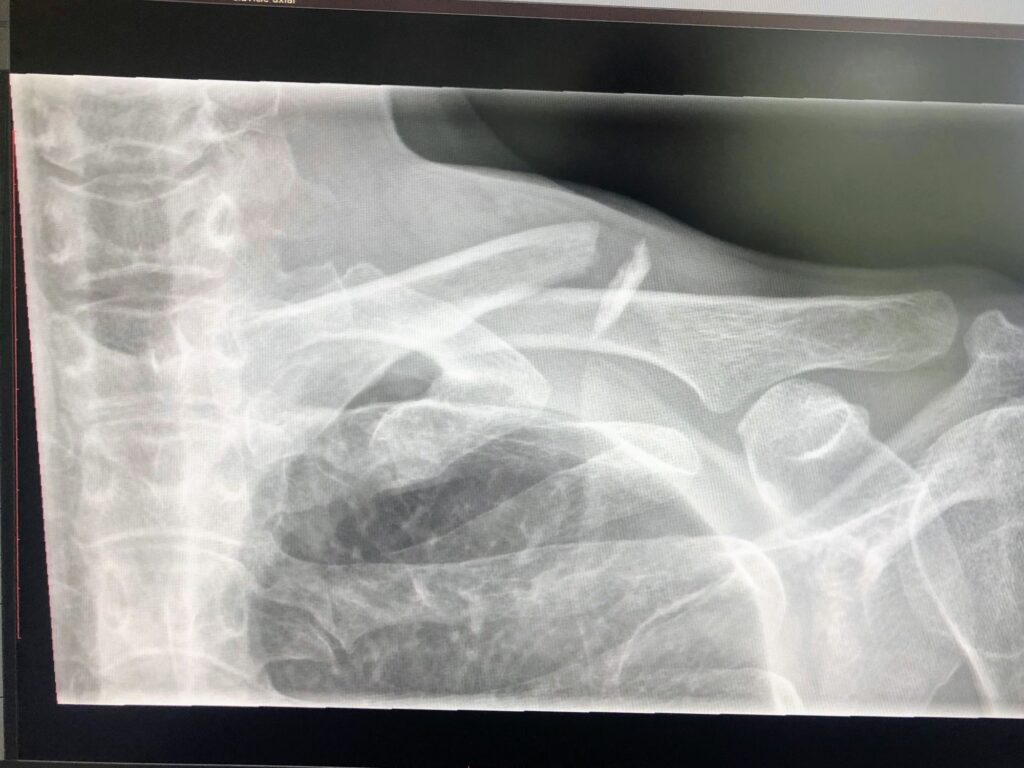
In March 2022, I was out for a casual bike ride with my dog, Shadow, riding up front in a basket. As we passed a large dog, Shadow got excited and tried to jump out. The strap holding him had loosened, and he ended up tangled in the wheel.
The bike came to a sudden stop, and I flew forward, landing hard on my left shoulder. At urgent care, an X-ray revealed a severe break—my collarbone had split in half and shifted out of place.
My First Clavicle Surgery: What Recovery Was Really Like
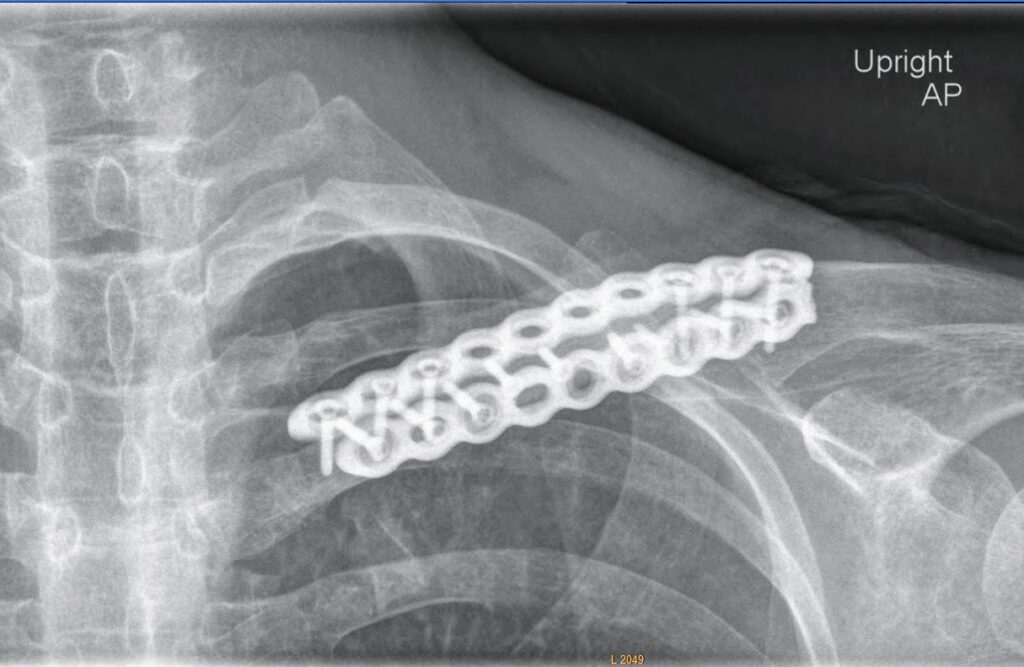
A few days after my accident, I had my first clavicle surgery. My doctor explained that while the bone could heal on its own, it wouldn’t align properly due to how severely it was broken.
My mother also broke her collarbone years ago in a car accident and never had surgery. Although she eventually recovered without pain or limitations, the bone healed unevenly, and part of it still sticks out to this day.
In my case, the doctor recommended surgery to ensure proper alignment and long-term stability. The procedure involved placing a titanium plate with 16 screws along the fracture to keep the bone in position as it healed.
Physically, the incision site felt tight and sore, but to my surprise, I didn’t experience sharp or ongoing pain. The hardest part was wearing a sling 24/7—including while sleeping—for six weeks.
That adjustment was especially difficult for someone like me who’s used to staying active. Even small tasks like getting dressed or finding a comfortable sleeping position became daily challenges.
Life With a Plate in My Shoulder

At first, I didn’t notice the plate much. Once the incision healed and the sling came off, I felt relieved to have some mobility back.
But recovery wasn’t quick. I spent several months doing physical therapy—both with a professional and on my own at home. It took around six months to regain functional movement, and a full recovery took over a year.
Even though I didn’t experience pain, I lost a lot of muscle mass in my left arm. To this day, I still haven’t fully regained it. Carrying a backpack became uncomfortable, and certain movements remained limited for longer than I expected.
The plate itself became more visible over time. It stuck out just beneath my skin and felt awkward—almost like a foreign object. It didn’t hurt, but it looked and felt unnatural.
After three years, I knew it was time to consider another clavicle surgery—this time to remove the plate.
Clavicle Surgery #2: A Smoother Recovery Experience
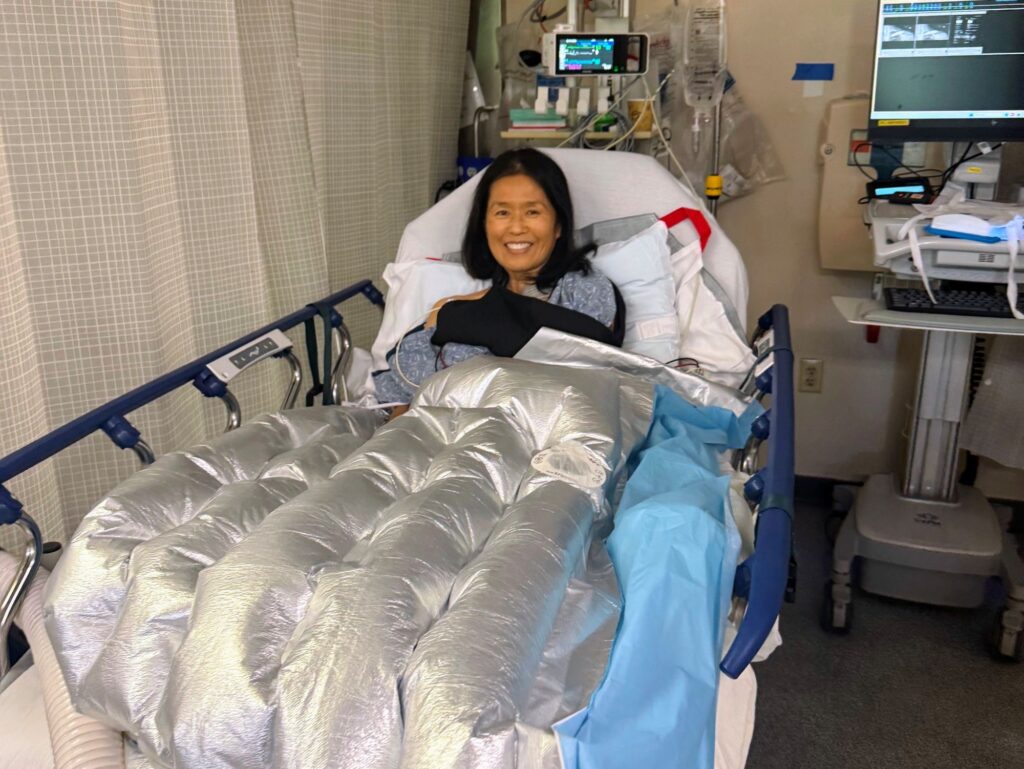
My second clavicle surgery was a much easier experience than the first. I went in around 10:15 a.m., and the procedure finished by noon. I woke up quickly, felt clear-headed, and had no nausea at all. By 1:00 p.m., I was home and already moving around without issues.
This was a big change from my first surgery, where I didn’t leave until late afternoon. I had struggled to wake up and felt sick for hours. This time, I asked the staff to go lighter on the anesthesia, and it made all the difference.
Recovery at home was smooth. I felt well enough to do light tasks that same evening. By the next morning, I removed the sling and began gentle arm movements. (Please always consult your doctor before doing the same.)
On day two, I started going for walks again. Staying active helped prevent muscle loss and stiffness, which I dealt with after the first surgery. Keeping the shoulder completely still for too long can lead to frozen shoulder, joint tightness, and slower recovery.
Even simple tasks—like reaching overhead or putting on a jacket—can become harder if the arm isn’t used early enough. For me, moving safely and gradually made a huge difference.
This recovery felt quicker, more manageable, and far less exhausting than the first.
Is Clavicle Surgery Worth It? My Honest Take
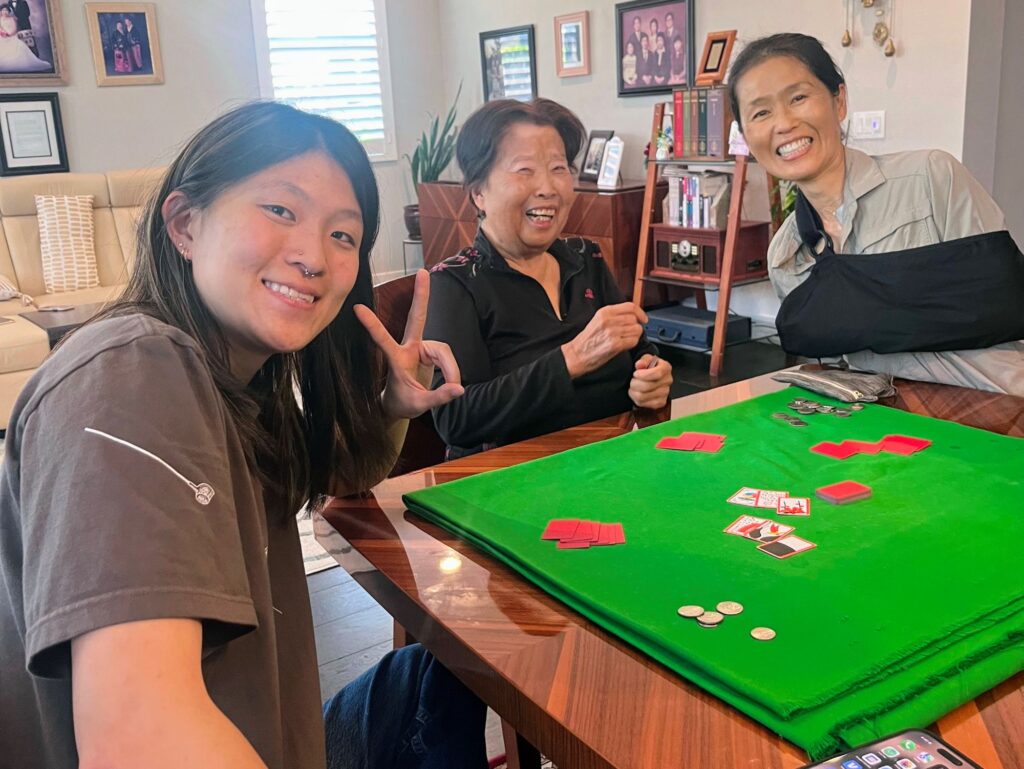
Looking back, I have no regrets about going through clavicle surgery—not once, but twice. It wasn’t easy, and recovery took time, especially after the first procedure. But the results were worth it.
My shoulder is now stable, aligned, and fully functional. I don’t have any lingering pain, and aside from some muscle loss, I can move freely again. The second surgery to remove the plate made an even bigger difference. I no longer feel that foreign object under my skin, and simple movements feel more natural.
Would I recommend clavicle surgery to someone in a similar situation? Yes—but only if the break is serious enough to affect proper healing. It’s not always necessary, but in my case, surgery helped restore alignment, prevent long-term issues, and give me back my full range of motion.
Like any surgery, it’s a personal decision. But I’m grateful I followed through and gave my body the support it needed to heal fully.
What I Learned From It All
If you’re facing clavicle surgery, it’s completely normal to feel unsure or even a little scared. I’ve been through it twice, and both times taught me something different about healing, patience, and listening to my body.
The first recovery took time and effort, but it worked. The second time, I knew what to expect, and the experience felt smoother and easier. What helped me most was staying active when I could, asking questions, and making informed choices that felt right for me.
No two recoveries are exactly the same, but if I could offer one piece of advice, it’s this: trust your body, give yourself time, and don’t be afraid to speak up about what you need. Healing isn’t always quick, but it is possible—and for me, it was absolutely worth it.
Related Posts on Self-Care:
Two Surgeries, No Pain Medications

